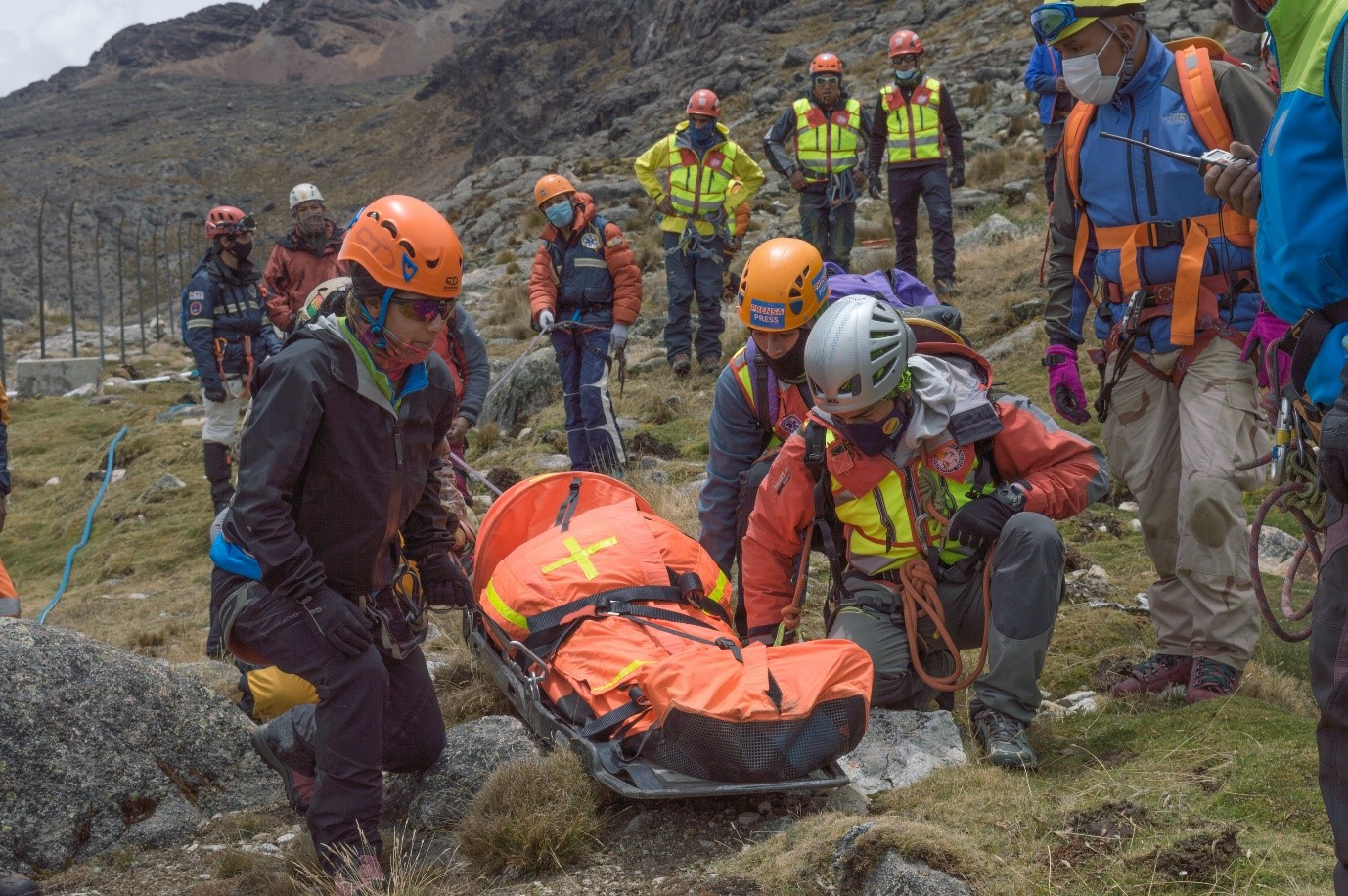In our previous article, we discussed the key elements that influence the assessment of disaster risk reduction. The overall impact of the disaster on the institutional infrastructure, assets, machinery, and other resources accountable for disaster risk reduction at the national and local levels are taken into account when assessing DRR systems. The ability of the government to integrate DRR into the recovery process in order to rebuild better is also examined, along with their capacity for providing services like early warning information, emergency response, and public awareness. Let’s look into the essential factors to take into account when evaluating the impact of disasters on DRR procedures.
Effects on Assets and Infrastructure
Institutions in charge of DRR at the national or local level may be impacted by disasters, which may limit their capacity to provide their services, to direct and carry out recovery programs that involve DRR, and to assist the major infusion of DRR into the recovery process. It should be mentioned that some sectoral ministries will monitor many of the disaster’s effects on infrastructure and assets in the domain of DRR. Therefore, the infrastructure team should receive any data the DRR team gathers regarding impacts on infrastructure and assets so that it may be presented in the report. The following are the primary factors to take into account while evaluating these institutions’ operational capability and functionality:
- Public facilities
The structures and infrastructure of local governments in disaster-affected areas as well as those of central government agencies are important in disaster risk reduction. The evaluation should take into account the structures and other assets of offices in charge of disaster management, technical organizations that keep an eye on geological and meteorological hazards and manage early warning systems, and organizations in charge of formulating, coordinating, planning, and implementing DRR, among others.
2. Plans for preventing disasters
Evaluate any mitigating plans in the impacted areas that have been damaged or destroyed, such as dykes, flood breaks, sea walls, etc.
3. Tools and technology
For example, for early warning monitoring, office supplies, resources, and assets, like cars, etc. Rain gauges, hydraulic gauges, weather stations, weather radars, seismographs, ocean buoys, computer systems that monitor flood levels, etc. are some examples of warning equipment.
4. Human resources
The impact of the disaster on the staffing levels of institutions involved in DRR as a result of human loss or absence.
5. Public documents and records
Public documents pertaining to DRR, databases, and data collection methods.
Impacts on Service Delivery and Service Access
Disasters undoubtedly have an impact on government organizations’ ability to operate and provide services when they destroy or damage their infrastructure, equipment, and other resources. The assessment, therefore, assesses how the services are disrupted and how this has an adverse effect on the general public’s access to such services.
- What services were being offered by DRR institutions to the local populations in the impacted areas?
- Which and how have the capacities for providing services been disrupted?
- What immediate solutions are there for restoring the essential services in the short to medium term while the recovery process is underway?
For a wide range of responsibilities, including risk assessment, early warning, disaster planning, risk reduction, and disaster management at the national and local levels, service-delivery capacities need to be evaluated. Examples of DRR-related services and resources to take into account during the assessment are:
Knowledge, Services, and Resources available for DRR
- Risk recognition and understanding
The availability of risk assessment studies, hazard maps, historical databases on hazards, and national-local information exchange methods should all be noted. Disaster loss inventories, information systems, baseline datasets, and risk-related information should also be noted.
- Early warning
This involves assessing the impact of the disaster on the nation’s capacity to forecast hazards with the necessary tools, technology, and technical personnel, as well as early warning services for public dissemination; the capability of technical agencies to model, forecast, assess, and monitor risks associated with hazards and climate change.
- Disaster preparedness and management
Determining whether the government agency in charge of disaster management and preparedness has enough personnel, supplies, and space for logistics, as well as adequate emergency operations centres and communications networks at the national and local levels; whether there are national and local preparedness plans; and whether the general public is aware of the risks. Local institutions including NGOs, civil society organizations, municipalities, and neighbourhood groups need to be developed particularly in high-risk locations and within at-risk communities, even though central-level preparedness is crucial for large-scale catastrophes.
Access to DRR Information, Resources, and Services
The assessment team must also take into account how easy it is for the impacted community to access information, services, and resources pertaining to disaster risk reduction. Although DRR-related services may still be available, it’s possible that the disaster prevented some people from using them or that local authorities lack the resources they need. Here are some things to think about:
- The extent to which local communities have access to early warning information about various threats.
- Knowledge of household-level precautions to take to save lives, property, and livelihoods.
- Having access to information on emergency shelters and evacuation centres.
- Participating in disaster preparedness activities like simulated drills and contingency planning.
- Community access to DRR resources, including danger maps, backup plans, building codes, and pertinent laws.
- Community awareness of risks and exposure to natural hazards.
- The availability of DRR laws, policies, construction rules, standards, danger information, national contingency plans, etc. to local authorities.
- Having access to useful tools and advice on incorporating DRR into local recovery for local authorities.
Effects on Decision-Making and Governance
As we have discussed, disasters will invariably have an impact on government institutions’ ability to operate and provide services when they damage or destroy their infrastructure, equipment, and other resources. Therefore, the assessment gauges how the calamity has impacted the technical, administrative, and management capacities. The important questions to ask are:
- How did the disaster affect the ability of important DRR institutions to function?
- How did the disaster influence the DRR authorities’ ability to organize the relief effort and recovery process?
- What capabilities do international assistance organizations bring to the disaster response, and how can this capability be utilised to enhance the recovery process?
- Is the disaster affecting early warning systems, weather forecasting systems, and search and rescue equipment?
- Can the relevant departments and authorities continue providing services? If so, what additional resources will they need?
The assessment team will need to determine the necessary capacity-building measures to strengthen the government’s institutional arrangements, human and material resources, technical assistance, and policy frameworks in order to enable it to mainstream DRR into recovery and to build back better. This is done by assessing the effects on DRR governance and decision-making processes. Consider the following elements of governance:
- Institutional framework for directing and overseeing DRR: Disaster risk mitigation is multifaceted, pertinent to all industries, and involves a wide range of stakeholders and specialities. The team will need to take into account the institutional capability of the government and pinpoint any holes that require attention. Think about the necessity of forming a technical and impartial advisory board that can be crucial in establishing the DRR design for the recovery strategy, counselling the reconstruction agency, and keeping track of developments. The principal coordinating body and council members should have their roles and responsibilities clearly laid out. In order to ensure an integrated, multi-sectoral approach to DRR, this council can also serve as the framework for collaboration with important stakeholders.
2. Policy and regulatory capacity: In order to provide the framework and clear mandate for decision-makers, planners, practitioners, and civil society, relevant national legislation and policies on disaster risk reduction must be in place in the context of post-disaster recovery. When this isn’t the case, the team must decide which new policies or modifications to existing ones are required. This could be in the form of a recovery-specific policy or standard operating procedures detailing the fundamental guidelines to be followed, the minimal requirements, the DRR criterion for recovery investments, etc.
3. Technical proficiency: A variety of specialists will be needed for the proper integration of DRR into recovery. The team will need to determine whether there is enough staff within the government to carry out the tasks and direct the mainstreaming of DRR, or if external recruiting or capacity-building training is necessary, as well as the specialists that will be required.
4. Useful tools: To help with decision-making and the practical application of DRR, the team should identify any tools that are necessary for mainstreaming DRR into rehabilitation. As an illustration, consider the need for data, maps, information, databases, information management systems, manuals, and guidelines for national and local authorities, as well as other stakeholders, as well as studies, best practices, and lessons learned.
5. Decentralized Implementation: Since local governments will be in charge of planning and implementing DRR, it is crucial that the assessment pinpoint the mechanisms or assistance required to make sure that they have the capacity to do so in terms of technical know-how, resources, direction, training, practical tools, etc.
6. Participation: The team will need to develop the procedures that will enable inclusive participatory processes and systems that include all women, girls, boys, and men. Civil society organizations, affected communities, and the commercial sector are significant stakeholders in the rehabilitation process.
7. Monitoring: Establish methods for keeping tabs on development and tracking DRR throughout the recovery process.
Pursuing our Disaster Risk Reduction & Management course will equip you with more knowledge on the important factors to consider when assessing disaster effects on DRR systems. Register today for a 10% discount and be sure to subscribe to our newsletter for more insightful articles.







